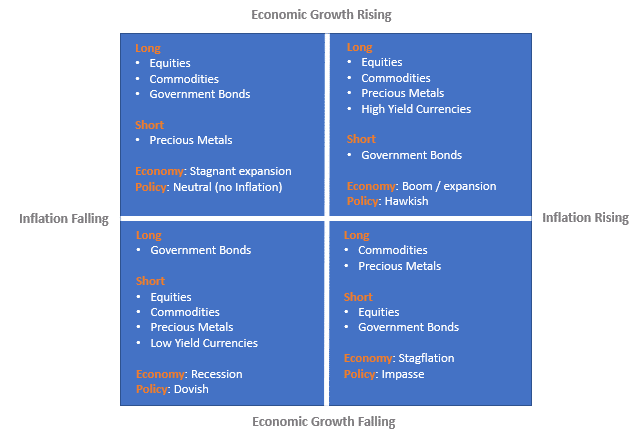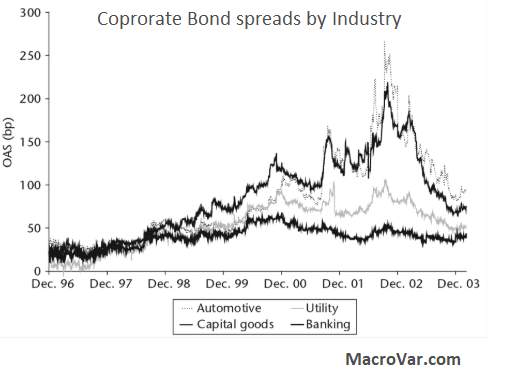Analysing Junk Bonds and their performance during economic environments
Junk Bonds Definition
Junk bonds are speculative corporate bonds providing high returns because of their high default risk. Since these bonds always have higher interest rates than investment-grade securities, they are also referred to as high yield bonds.
Default risk is the chance that the company issuer of the junk bond will be unable to pay its obligations before or when the bonds mature.
Junk Bonds Default Risk Assessment
The assessment of a corporation’s default risk is provided by credit-rating agencies which are investment advisory firms that rate the quality of corporate bonds in terms of the probability of default. The two largest credit rating agencies are Standard & Poor’s corporate and Moody’s.
A bond with a AAA rating has the highest grade possible. Bonds at or above Moody’s Baa or S&P BBB are considered investment grade bonds which are the highest quality corporate bonds.
Bonds rated below BBB by Standard & Poor’s are considered very risk and are called junk bonds or high yield bonds.
The debt ratings in detail are presented below:
- Medium-Risk Corporate Bonds: Rated BBB by Standard & Poor’s and Baa by Moody’s: These corporate bonds are rated as medium-risk bonds. They have adequate capacity to pay interest and the principal however they may lack long-term reliability. They have an average historical default rate of 0.15%.
- High Risk Junk Bonds: Standard & Poor’s rating BB, Moody’s rating Ba: These corporate bonds are rated as medium-risk bonds. They have a moderate capacity to pay interest and the principal however the company’s future is not considered well assured. They have an average historical default rate of 1.25%.
- High Risk Junk Bonds: Rated B by Standard & Poor’s and B by Moody’s: These corporate bonds are rated as high-risk bonds. They do not have adequate capacity to pay interest and principal and future adverse economic conditions may push them to default. They have an average historical default rate of 6.5%.
- Extremely High-Risk Junk Bonds: Standard & Poor’s rating CCC, CC or C, Moody’s rating Caa: These corporate bonds are rated as extremely high-risk. These companies have a high probability of default and the repayment of these bonds is dependent on favorable economic and business conditions. They have an average historical default rate of 25%.
- In Default: Rated D by Standard & Poor’s and C by Moody’s: These corporate bonds are currently in default
Do not rely just on Credit Rating Agencies
Keep in mind that you should not just rely on credit-rating agencies debt ratings before investing in a junk bond. Credit rating agencies have historically underestimated the credit risk of various securities leading many investors to experience heavy losses.
During the great recession of 2009, agencies rated mortgage-backed securities (MBSs) as investment grade AAA low-risk investment securities. This led many investors to believe that these securities were very safe with no risk. Later, the mortgage market collapsed, and investors experienced heavy losses.
Junk Bond Prices and credit spreads
Junk bond prices are intricately linked to credit spreads. Higher credit spreads lead to lower junk bond prices. If the market believes the company’s default risk has risen, it will sell its junk bonds requiring higher credit spreads for the rising bond’s risk than the initial level of credit spreads when the same junk bond was issued. The price of this junk bond will fall because new junk bonds will be issued with higher coupon rates making the old outstanding junk bonds with lower coupon rates, less attractive unless they can be purchased at a lower price. Conversely, lower credit spreads mean higher junk bond prices.
Junk Bonds and the Economy
Real economic growth expectations and the inflation outlook of the global economy drive all financial assets. There are 4 economic environments based on economic growth and inflationary conditions.

- Inflation boom: Accelerating Economic growth with Rising inflation
- Stagflation: Slowing Economic Growth with Rising Inflation
- Disinflation boom: Accelerating Economic growth with Slowing Inflation
- Deflation Bust: Slowing Economic Growth with Falling Inflation
Junk bonds are the best performing assets during periods of rising economic growth. Junk bonds are highly correlated to stocks. Junk bonds are the worst performing financial assets during periods of weak economic growth or recessions.
Factors affecting Junk Bonds
Each junk bond has a varying default risk level based on the specific company’s financial health which is dependent on many variables.
However, the two most important factors affecting a junk bond’s performance are:
- The junk bond’s sector and industry
- The specific company’s credit risk
Junk Bonds by sector and industry
The corporate bond’s sector and industry is the most important factor affecting a junk bond’s performance since corporate bonds in different sectors, have totally different risk-return profiles.
Cyclical versus noncyclical Corporate Bonds sectors
Sectors differ by their sensitivity to the economic environment. Investors distinguish sectors into cyclical and noncyclical sectors. Cyclical industries are highly correlated to the business cycle. During economic expansions, their revenues and cash flows expand substantially outperforming noncyclical sectors because their goods and services are linked to private consumption. A Typical example of a cyclical sector is the automotive industry. Non-cyclical sectors are not highly correlated to the business cycle. Hence, corporations in these sectors are very resilient during recessions. A typical example of a noncyclical sector is the utility sector.
During economic recessions, junk bonds of cyclical sectors credit spreads widened substantially signifying a rising credit default probability. On the other hand, corporate bonds of non-cyclical sectors remained stable.

Junk Bond specific Credit Analysis
A specific Junk bond is also affected by company-specific factors which require further investigation of the company’s fundamentals.
A bottom-up analysis of the company is required to analyze thoroughly the company’s credit risk. Check our guide on bottom-up approach to analyze companies.
How to buy Junk Bonds
The simplest way to purchase junk bonds is by buying a high yield funds or ETF through a brokerage or a financial advisor. Brokers like Fidelity, Charles Schwab allow you to invest in ETFs and mutual funds.
The two largest junk bond ETFs are the iShares iBOXX $ High Yield Corporate Bond Fund (Ticker: HYG) and the SPDR Barclays Capital High Yield bond ETF (JNK). However, the exposure of the fund on each sector and industry is out of your control and specified by the fund’s manager.
Hence, before you invest, it is important to follow these steps thoroughly:
- Monitor the Global economy and make sure the current economic environment is healthy and the future economic and inflation expectations are also robust.
- Verify that the overall junk bond market with the specific credit rating (BBB or lower) under examination has strong performance using MacroVar Corporate bonds monitor.
- Analyze the fund’s composition in terms of its exposure by sector, by country and corporate credit rating
If you are interested in investing in a specific sector, industry, or an individual junk bond, then follow these additional steps:
- Verify that the specific junk bond sector and the related stock sector currently have strong momentum and trends using MacroVar free corporate bonds monitor.
- Analyze the sector’s performance during economic recessions using historical data to make sure you can incur a potential loss if it arises in the future.
- A company’s junk bond is highly correlated with the company’s stock and credit default swap. By analyzing the company’s stock using our stock trading guide and the company’s credit default swap you can easily deduce the company’s junk bond value.
- Analyze the company’s fundamentals using our bottom-up guide.
MacroVar monitors daily the 80 sectors and industries of the United States junk bond market and the 50 sectors and industries of the European junk bond market.
Sign up free using the forms on the right to receive daily analysis of financial markets and the global economies from MacroVar professional fund managers in order to identify investment opportunities and potential risks across financial markets like junk bonds, government bonds, stocks, commodities and currencies.